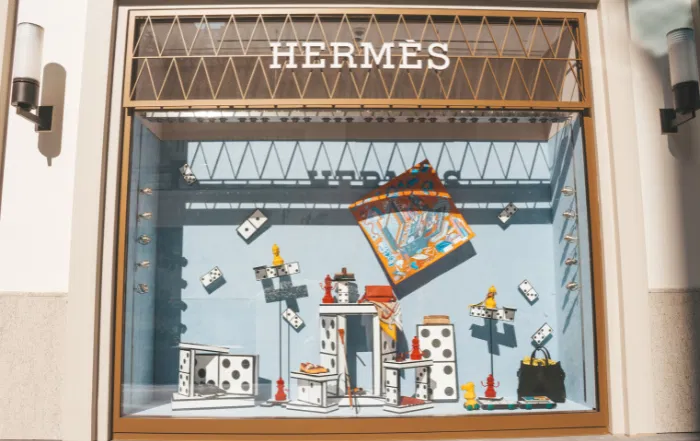A first instance decision has just issued confirming that Hermès has succeeded in their US lawsuit against Mason Rothschild regarding use of “MetaBirkin” in relation to NFTs. This landmark decision shows that trade mark owners can prevent third parties from using conflicting brands in relation to NFTs and will offer them comfort to protect and enforce their trade marks in the digital world. The case acts as a warning to artists and other parties in using conflicting brand names to sell their works in this space.
We discuss this further below.
Decision summary
The action was brought against Mason Rothschild’s use of the trade mark “MetaBirkin” on NFTS with digital bag designs based on famous designs Hermès Birkin bags.
The decision concluded that use of the MetaBirkin trade mark in this way violated Hermès rights in the Birkin trade mark. The NFTs were held not to quality as ‘protected art’ and therefore were held to infringe Hermès’ trade mark rights.
Whilst Hermès does not yet offer its own NFTs, it argued that it had developed plans to do so and that Rothschild use of “MetaBirkin” would hamper its ability to move into this space such that consumers were likely to be confused as to the origin of Rothschild’s NFTs and that use of the “MetaBirkin” brand would damage the reputation and exclusivity of the Birkin brand.
Rothschild had argued that it was entitled to sell the artworks attached to the NFTs and in that context use of “MetaBirkin” was not an infringement.
The key question that the Court and, ultimately, the jury, were asked to consider was under the so-called “Rogers test” applied in US trade mark law. According to this test, trade mark protection can be used to prevent unauthorised use of conflicting trade marks if the trade mark has no artistic relevance to the underlying work, or if the work explicitly misleads as to the source or content of the work.
As such the key question was how consumers would perceive the work. In support of their case, Hermès relied on a range of evidence including surveys indicating confusion between the origin of the “MetaBirkin” and the Birkin brand.
In this case the jury found that Rothschild’s actions did pass the “Rogers test”, such that consumers were misled as to the origin of the products and that through use of related “MetaBirkin” domain names to sell the works, Rothschild was “cybersquatting”.
Implications
The decision may assist brand owners in navigating the blurred line between the real and virtual worlds and has implications for how artists can sell their works. This case suggests that IP rights should apply and be enforced in the digital world as they are in the real world and indicates that the same tests (i.e. likelihood of confusion, reputation, etc.) should be applied in making this assessment.
The key here was the perception of consumers concerning use of the “MetaBirkin” brand name used to sell the works. Many fashion houses and brands also actively offer NFTs of their branded goods in the virtual space adds to this possibility of confusion and consumers might expect NFTs sold under conflicting brand names to originate from the brand owner.
As such and unlike in the case of traditional art created and displayed in galleries etc. artists and brands might be seen as competitors in selling NFTs under the same or conflicting brand names and this is the main reasoning behind the decision.
There are clearly important considerations for artists raised by this case. However, it is important to remember that this decision is not so much concerned with the art that was created but the way in which it was branded and “packaged” to consumers.
In this case, key factors were not just that an image or depiction of a Birkin handbag used in the artwork, but it was called “MetaBirkin” and a domain name using “MetaBirkin” was registered to sell the works. This combination of factors, including text messages from Rothschild relied on as evidence by Hermès referring to his project as a ‘goldmine’ and evidence showing it was the value Hermès of Birkin brand name which drove interest and revenue generated by sale of the works was key in finding infringement.
As such, artists need to take care in use of brand names to sell their work even if this case shows the difficulty in splitting the subject of the artwork and the brand used to promote it.
What happens next?
Rothschild has indicated an intention to appeal the decision so the story is not over and it will be interesting to see if a different decision is issued by a specialist judge rather than a jury.
Meanwhile brand owners will see the value in ensuring their trade marks are protected in relation to this space. There is a “first-mover advantage” in securing protection for trade marks in relation to NFTs and virtual goods and this decision might spark similar enforcement actions to be taken by brand owners in future.



